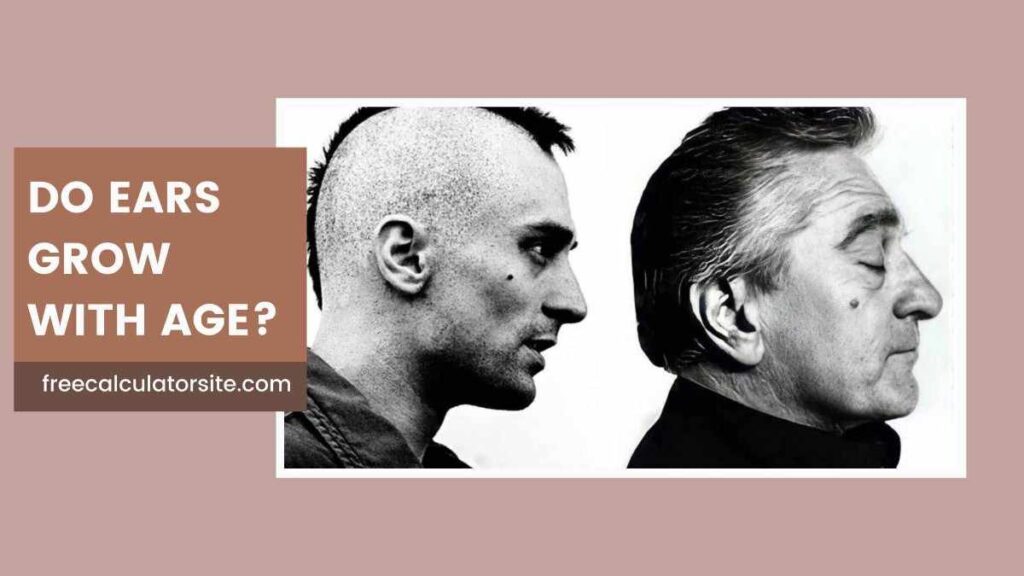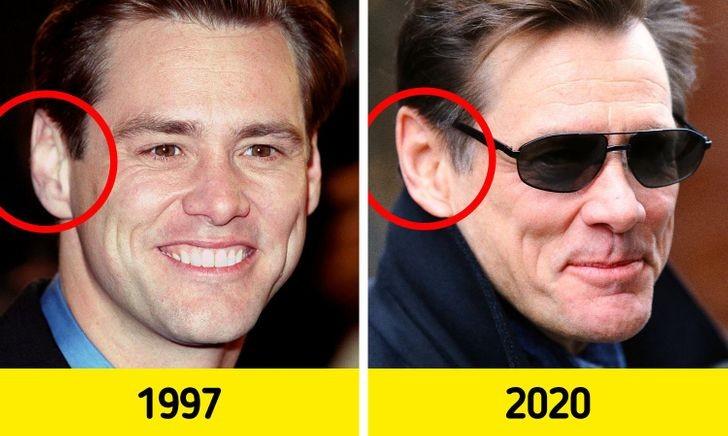Last updated on October 10th, 2024 at 07:26 pm

It’s a commonly held belief that as we grow older, our ears continue to grow.
If you’ve ever observed that older people often seem to have larger ears, you’re not alone—this phenomenon has fascinated both scientists and the general public for years.
But do ears really grow with age? Or is this just a myth?
The answer, it turns out, lies in the fascinating biology of our ears and how aging affects different parts of our body.
This article will delve into the science behind ear growth, discuss why it happens, and explore the broader implications of this physical change.
The Anatomy of the Ear
To understand why ears might grow with age, it’s essential to understand their structure.
The ear is made up of two key components: cartilage and skin.
The outer ear, known as the pinna, is primarily composed of cartilage, while the earlobe is made of skin and fat.
Unlike bones, cartilage does not stop growing or regenerating at a specific age, and it has a somewhat flexible nature.
This ability to change is a key factor in the observation that ears might enlarge as we grow older.
Studies on Ear Growth

Several scientific studies have examined the connection between age and ear size.
A study conducted by British general practitioner James Heathcote in 1995 measured the ear length of 206 patients aged between 30 and 93.
His findings were groundbreaking, revealing that the average ear length increased by about 0.22 millimeters per year.
Similar studies have shown that both ear length and circumference tend to increase over time.
In a more detailed 1999 study, researchers R. Tan, V. Osman, and G. Tan further explored this phenomenon by analyzing 100 individuals, comparing their ear and nose sizes with age.
They found that ear circumference, in particular, correlated significantly with age, suggesting that ears do indeed grow larger as people get older.
The study concluded that ear circumference increased by approximately 0.51 millimeters per year.
See Also: Can Eye Color Change with Age?
Why Do Ears Appear to Grow With Age?
Now that we know ears seem to grow, the next logical question is: why?
There are several explanations for this phenomenon.
Loss of Skin Elasticity:
One major factor contributing to the appearance of larger ears as we age is the gradual loss of skin elasticity.
As the skin loses its ability to snap back into place, it begins to sag, making the ears appear longer.
This sagging can give the illusion of growth, particularly in the earlobes, which consist mostly of skin and fat.
Cartilage Growth:
Cartilage, unlike bones, continues to grow throughout life.
This explains why areas of the body that are primarily composed of cartilage, such as the ears and nose, may appear to grow over time.
Additionally, as cartilage ages, it becomes less firm and more flexible, leading to elongation and enlargement.
Gravity’s Effect:
Over time, gravity also plays a role in stretching out the tissues in our ears.
Since ears are largely made of cartilage, they can sag under the influence of gravity, causing them to elongate.
This is especially noticeable in the earlobes, which can become stretched and elongated as we age.
Changes in Collagen and Elastin:
Aging also affects the production of collagen and elastin, two proteins that are crucial for maintaining the firmness and elasticity of our skin and cartilage.
As the production of these proteins decreases with age, the ear’s structure can change, contributing to its apparent growth.
A Predictor of Age?
Can ear size be used to predict someone’s age?
Interestingly, researchers have explored this idea.
Some studies suggest that ear size, particularly ear circumference, can be used to estimate a person’s age.
For example, based on the study by Tan and colleagues, the following formula was proposed:
Age = 1.96 x (Ear circumference in millimeters – 88.1)
While this formula may offer some insight into a person’s age, it’s far from foolproof.
Individual variations in genetics, lifestyle, and environmental factors can also influence ear size, making it an unreliable tool for determining age with precision.
Do All Ears Grow the Same Way?

One question that naturally arises is whether everyone’s ears grow at the same rate.
The answer is no—like many aspects of aging, ear growth can vary significantly between individuals.
Genetics, gender, and environmental factors all play a role in determining how much a person’s ears will change over time.
For instance, some studies suggest that men’s ears tend to grow more than women’s, possibly due to hormonal differences or varying skin elasticity.
Also Read: Age Group Wise Population of India
Social and Cultural Perceptions
Beyond the biological aspect, the idea of ear growth carries social and cultural significance.
In some societies, larger ears are associated with wisdom and age, and are considered a symbol of status.
In other cultures, larger ears might be seen as less aesthetically pleasing, leading some individuals to seek cosmetic surgery to reduce the size of their ears as they age.
In fact, ear surgery, known as otoplasty, is a common procedure for people who wish to reshape or reduce the size of their ears.
For older individuals experiencing elongated earlobes or sagging ears, otoplasty offers a way to reverse the effects of aging and achieve a more youthful appearance.
The Fascinating Intersection of Biology and Aging
While the growth of ears as we age might not have any direct medical purpose, it serves as a fascinating reminder of how our bodies change over time.
Cartilage growth, loss of skin elasticity, and the constant pull of gravity all contribute to the gradual elongation of our ears, making them a visible marker of aging.
Though this change might not be as dramatic as the graying of hair or the wrinkling of skin, the growth of ears serves as a small but telling indicator of the passage of time.
Understanding this process not only adds to our knowledge of human anatomy but also sheds light on the intricate ways aging manifests in our appearance.
Conclusion
So, do ears grow with age? Yes, they do—though not in the way you might think.
While cartilage continues to grow and gravity plays a role in elongating our ears, the actual “growth” is more a result of structural changes in the body rather than continuous biological expansion.
For many, this natural change is simply a part of getting older, and understanding why it happens can give us a greater appreciation for the subtle ways our bodies evolve over time.

Akash Singh is a finance enthusiast who shares valuable insights on various calculators.
